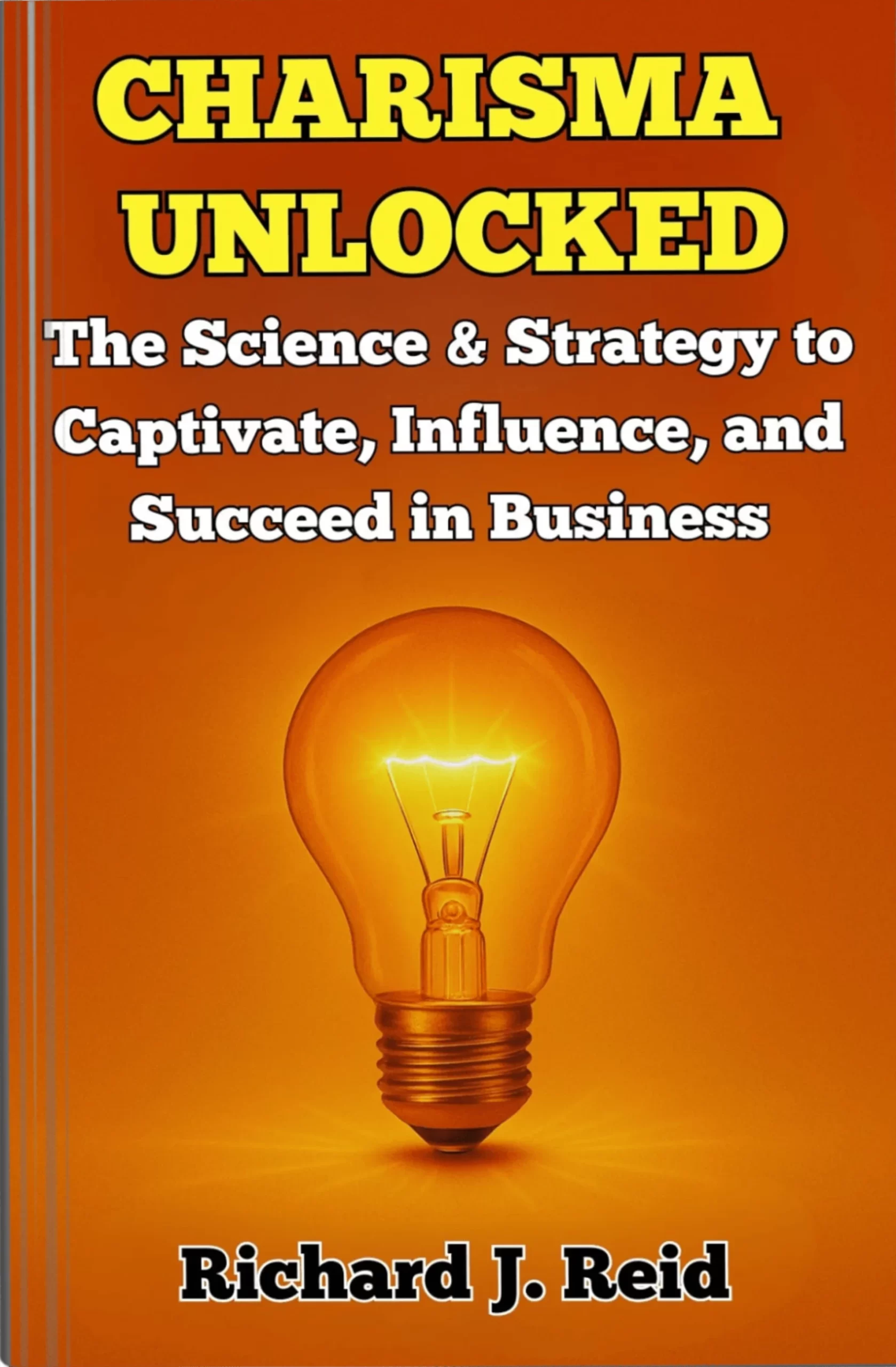Executive Summary
Sales leadership plays a pivotal role in ensuring sustainable revenue growth in today’s volatile and competitive business environment. As digitalisation accelerates, customer behaviours evolve, and market dynamics shift rapidly, UK organisations must adopt advanced sales strategies that transcend short-term results and instead foster long-term value creation. This whitepaper provides business professionals and sales leaders with research-backed insights, actionable frameworks, and contemporary best practices to empower sales teams, optimise processes, build lasting client relationships, and drive profitable, sustainable growth well into the future.
SEO focus: sales leadership, revenue growth, sales strategies, sustainable sales, sales team performance, business growth, sales transformation, UK business.
Table of Contents
- Introduction: The Critical Role of Sales Leadership
- The Business Case for Sustainable Sales Growth
- Characteristics of Effective Sales Leaders
- Building a Sales-Driven Culture
- Strategic Sales Planning for Growth
- Modern Sales Structures and Methodologies
- Talent: Recruitment, Development, and Retention
- Coaching, Performance Management, and Motivation
- Leveraging Technology and Analytics in Sales
- Customer-Centric Selling and Value Creation
- Aligning Sales with Marketing for Maximum Impact
- Measuring, Monitoring, and Adapting for Ongoing Success
- Case Studies: Sales Leadership in Action
- Conclusion: Embedding Sustainable Sales Growth
- Further Reading and Resources
Introduction: The Critical Role of Sales Leadership
Sales leadership is far more than managing quotas and targets. Effective sales leaders serve as visionaries, strategists, coaches, and change agents—capable of navigating uncertainty and driving the kind of cultural and process transformation necessary for enduring revenue growth.
A 2023 McKinsey & Company report highlights that companies with high-performing sales leadership are 1.5 to 2 times more likely to deliver above-market revenue growth. In contrast, those relying solely on traditional, transaction-focused tactics risk stagnation or decline as buyers become more sophisticated and digital disruption evolves markets.
This whitepaper unpacks key strategies for UK business professionals aiming to build high-impact, future-ready sales organisations.
The Business Case for Sustainable Sales Growth
Sustainable revenue growth is not achieved through aggressive short-term tactics. Instead, it relies on consistency, resilience, strategic vision, and effective customer and talent management.
Benefits of Sustainable Sales Growth
- Predictability: Stable and repeatable revenue streams improve forecasting and stakeholder confidence.
- Profitability: Retained clients and streamlined processes lower acquisition costs and increase margins.
- Reputation: Ethical, relationship-focused sales leadership enhances brand equity.
- Employee Engagement: Strong leadership fosters loyalty, reducing turnover and costs.
Risks of Short-Term Sales Tactics
- High staff burnout and churn
- Erosion of customer trust through aggressive selling
- Increased discounting and reduced profitability
- Inability to adapt to market shocks or disruption
A balance of immediate opportunity capture with strategies for long-lasting value is crucial for sustained growth.
Characteristics of Effective Sales Leaders
Successful sales leaders possess a blend of technical, interpersonal, and strategic skills:
- Vision and Strategic Thinking
- Establishes clear, inspiring direction aligned with business goals
- Communicates long-term objectives and connects them to daily activities
- Emotional Intelligence
- Empathises with team members and clients
- Reads the room and tailors communication to diverse situations
- Adaptability
- Responds quickly to market changes and competitive threats
- Drives innovation in sales processes and approaches
- Coaching and Development Skills
- Enables salespeople to reach their full potential
- Provides regular, actionable feedback
- Integrity and Accountability
- Holds themselves and others to high ethical standards
- Takes ownership of both successes and failures
For further reading, see LinkedIn Sales Blog – What Makes a Great Sales Leader?
Building a Sales-Driven Culture
Culture—“the way things are done around here”—powerfully shapes sales success.
Hallmarks of a High-Performing Sales Culture
- Customer-Focused Mindset: Everyone’s role is connected to the client’s needs and outcomes.
- Transparency: Open sharing of performance metrics, wins, and learnings.
- Collaboration: Silos are broken down between sales, marketing, product, and service teams.
- Learning Orientation: Mistakes are viewed as learning opportunities, and training is ongoing.
- Recognition: Great performance and behaviours are celebrated publicly.
Practical Steps:
- Integrate CX and sales metrics in leadership dashboards
- Establish regular sales “huddles”
- Celebrate both small wins and major deals
For guidance, explore the Harvard Business Review – Sales Culture.
Strategic Sales Planning for Growth
Without a clear roadmap, even the most enthusiastic sales efforts can flounder.
Elements of an Effective Sales Plan
- Market Segmentation and Targeting
- Focus on high-potential industries, verticals, or customer types
- Use data to prioritise accounts and prospects
- Go-To-Market Strategy
- Define channels, routes to market, and resource allocation
- Choose the right selling model (inside, field, partners, etc.)
- Value Proposition Development
- Tailor messaging to resonate with target audiences
- Highlight both rational and emotional benefits
- Sales Funnel Optimisation
- Identify friction points and streamline the buyer journey
- Align activities and resources to every stage
- Resource and Talent Planning
- Allocate headcount and enablement resources effectively
For templates and guidance, visit HubSpot – Sales Planning.
Modern Sales Structures and Methodologies
To compete effectively, sales leaders must revisit and iterate their structural and methodological approaches.
Organisational Structures
- Hunter/Farmer Model: Dividing teams into new business (hunters) and account management (farmers)
- Pod or Squad Structures: Cross-functional teams focused on key segments
- Vertical/Industry Specialisation: Aligning expertise to customer sectors
Sales Methodologies
- Solution Selling: Focusing on the customer’s pain points and how your offer solves their problems.
- Challenger Sale: Leading with insights, coaching the customer on new perspectives.
- SPIN Selling: Using Situation, Problem, Implication, and Need-Payoff questioning.
Best-in-class organisations blend methodologies, tailoring approaches to fit their customer segments and sales cycles.
For more, see the Sales Enablement PRO guide.
Talent: Recruitment, Development, and Retention
The best sales strategies are only as effective as the people executing them.
Recruitment Best Practices
- Hire for attitude, curiosity, and resilience over credentials alone.
- Use structured interviews and situational assessments to reduce bias.
- Assess for cultural fit and customer orientation.
Development and Onboarding
- Provide structured onboarding programmes for rapid ramp-up.
- Match new hires with mentors or “buddies.”
- Offer continual learning—on products, markets, skills, and tools.
Retention Tactics
- Career progression paths and personal development plans.
- Regular feedback and recognition
- Wellbeing and mental health support
Linking sales performance to team-based rather than only individual rewards encourages collaboration and reduces unhealthy competition.
The Chartered Institute of Marketing and CIPD offer additional resources on talent and capability.
Coaching, Performance Management, and Motivation
High-performing sales teams flourish with consistent coaching, clear metrics, and intrinsic and extrinsic motivation.
Coaching for Success
- Move from directive management to a coaching style.
- Use evidence-based feedback, focusing on behaviours and outcomes.
- Set regular coaching sessions, not just one-off reviews.
- Encourage reflection: “What worked? What would you do differently?”
Performance Management
- Use balanced scorecards: revenue, activity metrics, customer satisfaction, and deal quality.
- Real-time dashboards (e.g., Salesforce, Power BI) foster transparency.
- Align incentives with long-term goals, not just short-term wins.
Motivation Strategies
- Tailor recognition to individual team members.
- Provide autonomy in approach while maintaining accountability.
- Create healthy competition—leaderboards, contests, gamification.
See McKinsey – Motivating Sales Teams.
Leveraging Technology and Analytics in Sales
Digital tools are transforming sales processes, from prospecting to pipeline management.
CRM Systems
- Centralise contacts, deals, and communication (e.g., Salesforce, Microsoft Dynamics, HubSpot)
- Enable effective account management, forecasting, and reporting
Sales Enablement Platforms
- Training, content management, and coaching embedded in workflow (e.g., Showpad, Seismic)
Data Analytics and AI
- Predictive lead scoring
- Opportunity risk analysis
- Pipeline velocity measurement
Sales Automation
- Automated email sequences, appointment setting, follow-ups
- Integration with marketing, finance, and operations for a holistic view
Cloud-based, mobile-enabled tools empower hybrid and remote teams to collaborate and compete anywhere, anytime.
For the latest technologies, see Gartner’s Sales Technology Guide.
Customer-Centric Selling and Value Creation
A sustainable sales strategy is customer-obsessed, not product-obsessed.
Principles of Customer-Centric Selling
- Focus on understanding the customer’s world, not just their needs.
- Anticipate and address emotional as well as rational buying motives.
- Foster long-term relationships, not just transactions.
Building Value Through the Relationship
- Serve as a trusted advisor, not just a vendor.
- Provide insights into market trends and best practice.
- Add value with post-sale support, training, and proactive check-ins.
Voice of Customer
- Use formal (NPS, feedback surveys) and informal channels to gather input.
- Involve the sales team in CX initiatives and journey mapping.
- Close the loop, showing customers their feedback leads to improvement.
For customer-centric sales resources, visit Forrester – The New B2B Buyer.
Aligning Sales with Marketing for Maximum Impact
Alignment between sales and marketing (“smarketing”) is a proven driver of growth.
- Integrated Planning: Joint go-to-market strategies, coordinated campaigns
- Shared Metrics: Agreement on lead quality/criteria and account targeting
- Content Collaboration: Sales provides feedback, and marketing tailors content to field realities
- Feedback Loops: Regular, candid meetings to discuss what’s working
- Technology Integration: Shared platforms for lead management and customer data
HubSpot reports that aligned organisations achieve 208% more marketing revenue and 36% higher customer retention rates.
For guidance on sales-marketing alignment, see HubSpot’s Free Resources.
Measuring, Monitoring, and Adapting for Ongoing Success
Robust metrics enable continuous improvement and resilience.
Key Metrics for Sustainable Growth
- Revenue Growth: Overall, by segment, and product/service line
- Pipeline Velocity: Speed from lead to close
- Customer Acquisition Cost (CAC): Spend efficiency
- Customer Lifetime Value (CLV): Maximising profitability
- Win Rates and Deal Size: Effectiveness through the funnel
- Retention and Churn: Long-term loyalty health
- Sales Activity Metrics: Calls, meetings, demos, proposals—if linked to value
Continuous Feedback and Improvement
- Regular QBRs (Quarterly Business Reviews)
- Post-mortems on lost/won deals
- Utilise sales advisory councils or panels
- Monitor market trends and update playbooks as required
The Institute of Sales Professionals (ISP) offers benchmarking tools and best practice insights.
Case Studies: Sales Leadership in Action
- Sage UK: Transforming for Sustainable Growth
Sage’s UK sales leadership undertook a transformation focused on consultative, value-led selling:
- Shifted from “product push” to “customer outcomes”
- Deployed new CRM and analytics tools
- Invested in new-hire onboarding and frontline manager training
Results:- 19% YoY improvement in new revenue
- Increased customer renewal rates
- Higher sales team engagement scores
- Monzo Bank: Digital-First Sales Culture
Monzo built a sales team blending digital marketing and traditional selling:
- Full digital journey mapping with sales-marketing integration
- Hyper-personalised customer engagement through data
- Transparent and collaborative culture focusing on customer value
Results:- Industry-leading customer loyalty (highest NPS among UK banks)
- Significant organic user growth via referrals and advocacy
- BT Enterprise: Data-Driven Performance Management
BT transformed sales forecasting and coaching by:
- Implementing predictive analytics and AI-driven opportunity scoring
- Embedding performance dashboards into daily routines
- Rolling out structured coaching programmes for managers
Results:- Improved forecast accuracy
- 14% increase in close rates
- More agile response to market shifts
Conclusion: Embedding Sustainable Sales Growth
Sustainable revenue growth isn’t the result of luck—it is the product of deliberate, strategic sales leadership. By combining a value-focused culture with visionary planning, robust process, motivational coaching, and next-generation technology, business professionals can equip their sales teams to thrive amid uncertainty and meet the rising expectations of the modern buyer.
Sales leaders who prioritise continuous development, customer-centric strategy, and sales-marketing collaboration are poised to build the agile, empowered organisations that deliver sustained revenue and defend market share well into the future.
Further Reading and Resources
- McKinsey – Sales Growth Insights: McKinsey – Sales Growth Insights
- Harvard Business Review – Sales Management: Harvard Business Review – Sales Management
- Institute of Sales Professionals: Institute of Sales Professionals
- Chartered Institute of Marketing: Chartered Institute of Marketing
- CIPD – Sales Training Resources: CIPD – Sales Training Resources
- Gartner – Sales Technology: Gartner – Sales Technology
- HubSpot – Sales Planning Templates: HubSpot – Sales Planning Templates
- Sales Enablement PRO: Sales Enablement PRO
- Forrester – B2B Customer Experience: Forrester – B2B Customer Experience










